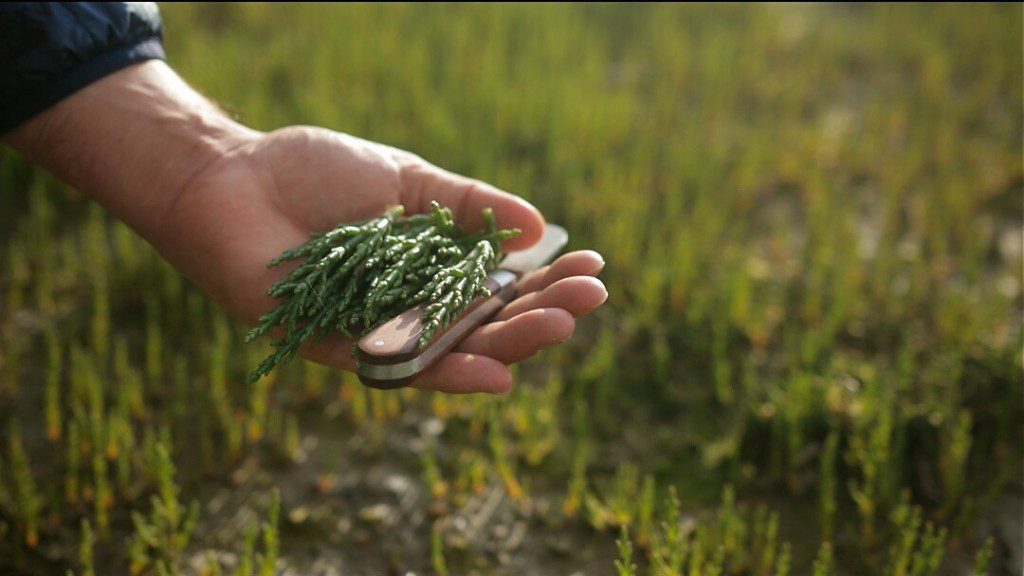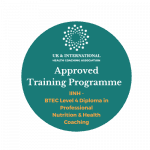PAUL QUINN
Nádúr Collective
The 3 Q’s restaurant, Greystones
When did you first become interested in food and nutrition?
I’ve been working in kitchens from the age of 15 but I’ve always been passionate about food. My Mum and Gran used to have stalls at the local markets when we were young so food always played a big role in our lives.
You set up Nádúr Collective in 2010 with two other chefs, Niall O’Sullivan (head chef of Merrion Row’s Bang) and David Gallagher (a representative for Artisan Foods), which offers foraging walks and events. How did you become interested in foraging?
Working front of house in the restaurant, I found I was missing cooking so that’s when my interest in foraging began. I was looking for something new to focus on and I started reading the Noma Cookbook by René Redzepi, which is all about wild food.
At first I found it very different and very alien to me. He was using some really cool ingredients, most of which I didn’t recognise to begin with, but it made me start looking around me more. The cool thing about foraging is that when we’re out and about many ingredients are staring us in the face but because we don’t know what we’re looking at, we don’t see what’s there. It’s a bit like bird watching. We only see a handful of birds we recognise and we lump them all into those categories but when you start studying them in more detail you start seeing a lot more variety.
One of the first things I spotted was some black seeds in against the wall with some shrubs. I tasted them and they tasted a bit like black pepper but I didn’t know what they were at the time. I went to a seminar on plants a while later and my wife recognised it as “Alexander Seed”, which can be used as a pepper substitute. I started reading “The Forager Handbook” by Miles Irving and that really opened my eyes to the possibilities.
Often when you go out foraging you’re looking for something in particular and find something else while you’re there and take it home to check what it is. That’s how you build up your experience.
I went to Copenhagen’s MAD Foods Symposium, which was founded by René Redzepi, to learn a bit more about wild food and myself, Niall and David were inspired to start our own wild food collective.
Tell us a bit about the kind of things you do at Nádúr Collective.
Since setting up we have held guided foraging walks, workshops and a wild-food art installation. We’ve done foraging walks in Kilcoole and have identified 40 different plants in that area alone. My daughter is in the Sea Scouts and we’ve also done events with them.
What are the benefits of foraging?
In modern life we have become disconnected from the food we eat so it’s a great way to get back in touch. Foraging opens up a whole world of flavours you miss in everyday life. You may not like them instantly and wild food can seem a little bitter at first but you need to taste something 6 or 7 times before deciding if you like it.
I especially love taking older people out and teaching them something they should know but may have missed.
I also love the folklore behind food, like the story we all heard as kids that dandelions make you wet the bed. There is actually some truth in it and dandelions do have a diuretic effect, especially the leaves. You can use the petals in a salad and the roots can be roasted and used as a coffee substitute, which you’ll find in many health food stores.
Once I discovered foraging, I was addicted to it right away. One of the best things about it is that it’s totally free so it’s a hobby that won’t cost you any money. In fact, within a few months of starting it, I found that I was actually saving money each month.
Another great benefit of foraging for wild food is that it gets you out. It gets you away form people and gives you some headspace. It’s good for your mental health and good for your physical health. It’s a lifestyle thing.
It also brings you to places in your own locality that you never even knew existed. When people find out what you’re doing they’re often quite happy to let you onto their land. So it takes you away from people and also connects you with them.

You bring students from cookery schools out on foraging trips and you also use foraging to educate your own kids about nutritious food. Do you think this is a good way to get kids eating more healthily?
It’s great for kids to see where food comes from and it’s a good way to get fussy eaters to taste new things.
What are the best foods to go foraging for in Ireland?
Wild garlic and blackberries are probably the most obvious things you’ll find. Sea buckthorn is a good one and can be found in Brittas Bay, Kilcoole and Bull Island. It tastes like passion fruit and is packed with nutrients. It can be used to flavor ice cream and tastes a bit like a Solero. Initially it has a slightly metallic taste but it can easily be sweetened up. Another really interesting thing we find is pineappleweed, which also tastes like passion fruit.
Sea aster is another good one that’s found near the coast. It’s a member of the bay leaf family. Elderflower is great and can be used in cocktails. The alexander plant is very useful – you can eat the leaf and stem and use the seeds to make pepper. It can be found along roadsides and near the coast. Sea beet can be found along the beach and tastes like wild spinach.
Where are the best places to go?
The beach is a great place to start and costal areas are ideal. Because there’s just sand and grass, you can spot things more easily. It can be harder to spot things in the forest, unless you know what you’re looking for.
What kind of recipes do you use the foraged foods in?
Ice cream is great for showcasing the flavours of foraged foods but many of the ingredients we find are also very useful for seasoning and flavouring dishes.

What are your top foraging tips?
Learn the poisonous plants first. I didn’t and I’ve had a few lucky escapes. Learn the areas that are more likely to have poisonous plants growing, like riverbanks. Some poisonous plants look very like other plants so you need to be careful. Hemlock water dropwort can easily be confused with wild carrot, wild celery and wild chervil and is potentially lethal.
Don’t trust the internet – get a flower identification book. There’s a good one by Zoë Devlin called “Wildflowers of Ireland”, which is a really useful guide. The leaves of many plants are very similar so they’re not much use for identification – the flower is the best way to differentiate between plants. Richard Mabey’s “Food for Free” is another good resource, as is “The Foragers Handbook” by Miles Irving.
It’s also important to forage in season. Only take what you need and don’t take too much of the plant.
What is your food and nutrition philosophy?
I’m primarily a cook, not a botanist. I love food. I love eating real food and there’s nothing more real than wild food. Get in touch with seasonality and nature and get closer to the source so you can enjoy food in its most natural state.
Who, in the area of food and nutrition, inspires you?
Danish chef, René Redzepi is a great inspiration. Frank Cook was also a mine of information on wild food. Many of his videos can be found on You Tube.
What advice would you give to people embarking on a career in the area of health and nutrition?
Keep it interesting. Keep experimenting. Keep pushing. My interest in foraging has led me into areas like fermentation with wild yeasts and making vinegars. It’s great fun creating things and then changing them. Don’t narrow yourself down. Always be open to learning and meet like-minded people. Be a teacher too and pass on what you’ve learned.
Where’s the best place for people to find out about your foraging events?
These days we publicise most of our events on Twitter so keep an eye on that. We have a lot of repeat customers so we see what the demand is like and organise events based around it.
Have you got anything exciting coming up?
We’d like to do foraging walks with a cooking element incorporated. My wife’s from New Zealand and they have a Māori tradition called Hāngi, which involves cooking food in underground pits so something like that would be fun to try.
Find out more: https://twitter.com/NadurCollective












